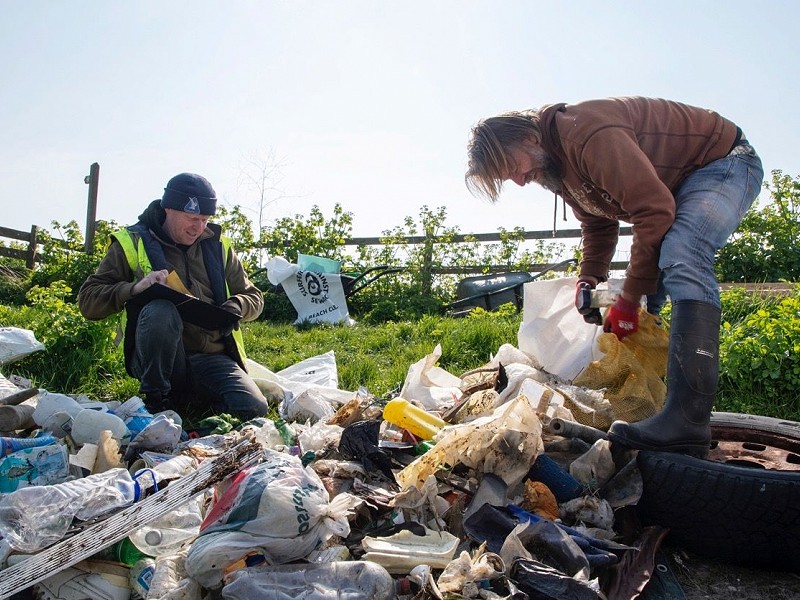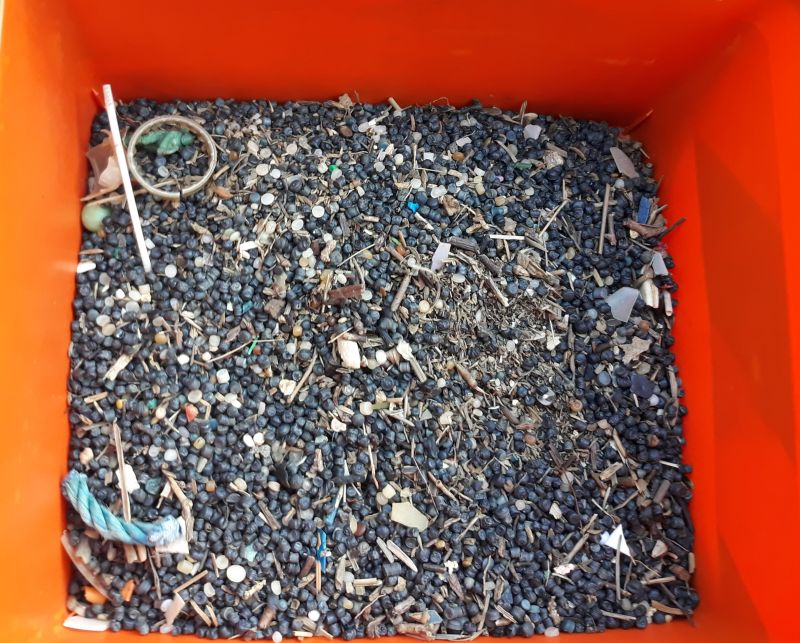Rye News has frequently reported on the activities of Strandliners and their efforts to clean up our beaches and river banks. Here, Emma Chaplin talks to the man in charge:
Andy Dinsdale has lived in Fairlight all his life. He’s been a juggler, worked for an engineering firm and has covered temporary posts at Sussex Wildlife Trust as a learning and engagement officer. He’s been leading riverbank and beach cleans since 2004, and is the executive director of Strandliners, a community interest company that seeks to make our rivers and seas cleaner. We speak to him at Pett Level, on a beautifully sunny February day, as the fulmar fly overhead.
Tell us a bit about yourself
I’ve been visiting Rye Harbour since the 1960s, when my parents brought me here. My first major job was for an engineering firm at Rye Harbour and I’d cycle to work through the reserve in the 1980s. I became fascinated by the wildlife after noticing two cuckoos following me as I cycled.
I then travelled the world and became more aware of the fragility of habitats and the negative impact of human intervention on the natural world. In the 1990s, I returned to the UK and started performing and teaching circus skills. I’ve realised that using these skills is a great way to connect with an audience. Juggling is also great for mental health, being a kind of meditative activity.
I grew up with punk and would describe myself as having a punk sensibility – I believe anyone can get up and do anything they want to.

I volunteered with Sussex Wildlife Trust at Rye Harbour Nature Reserve then did environmental education work with the RSPCA, aimed at increasing public awareness of the marine environment. I realised that not many children access the beach, so their knowledge of marine life is limited to what they see on TV.
I started organising marine debris surveys in 2004, for the RSPCA and Rye Harbour Nature Reserve, as part of my work with them. I started organising them on a voluntarily basis from 2008, and I’ve now organised more than 200.
I call them marine debris surveys rather than litter surveys because most of what we’re seeing has washed onto the beach from the ocean, rather than visitors simply leaving litter (although that is a problem too). 80% of what we find started off on land and ended up in the ocean via drains and rivers.
Tell us about Strandliners
Strandliners is about working with communities to achieve cleaner rivers and cleaner seas. To illustrate what we’re about, a typical beach clean involves ‘pick, bag and bin’. That’s great for the immediate benefit of wildlife and human visitors. But we want to stop the rubbish getting back on the beach by identifying and recording what we find, and sharing that information with national and international organisations. Our process, therefore, is ‘pick, identify, record, bag, bin/recycle’. Our surveys enable us to gauge the health of the ocean from what washes up.

We’ve been finding increasing amounts of plastic coming across the Atlantic from North America. You can sometimes tell where it’s from by the writing, for example on these lobster trap tags from Canada and the eastern seaboard of the USA.
Some things are actually treasure, these sea beans for example, seeds that have floated all the way from tropical America. The heart-shaped one is known as the sea heart. And we find birch bark from Canada.
You can find little pens, the sort that betting and catalogue shops provide. They weren’t dropped on the beach, but were dropped outside in the street, washed down drains and found their way into rivers and out to sea.

Then there are nurdles, which are pre-production plastic, and bio beads used in wastewater treatment.
We have found many ink cartridges too; these were from a mid-Atlantic container spill.
Helium balloons releases are lethal to wildlife. They are sold as biodegradable, but it can take 10 years or more before they fully degrade and are mistaken as food by marine wildlife.
People often blame the local fishing industry for rubbish, for example bits of old net, but it is difficult to know its age or even where it has come from.

A comment we often hear from people after our training is: “I’ll never see the beach in the same way again.”
Strandliners work with Surfers Against Sewage and the Marine Conservation Society, and receives support from Rother District Council, Little Cheyne Court Wind Farm Fund, Sea-Changers, the Rye Fund, Jempson’s, BreakFreeFromPlastic and Sussex Community Foundation as well as individual donors.
For more information on Strandliners and to sign up for their monthly newsletter, see here.
Andy is giving a talk in March entitled Beachcombing in the Southeast – My Search for a Seabean.
Image Credits: Emma Chaplin , Poppy Rampling .



